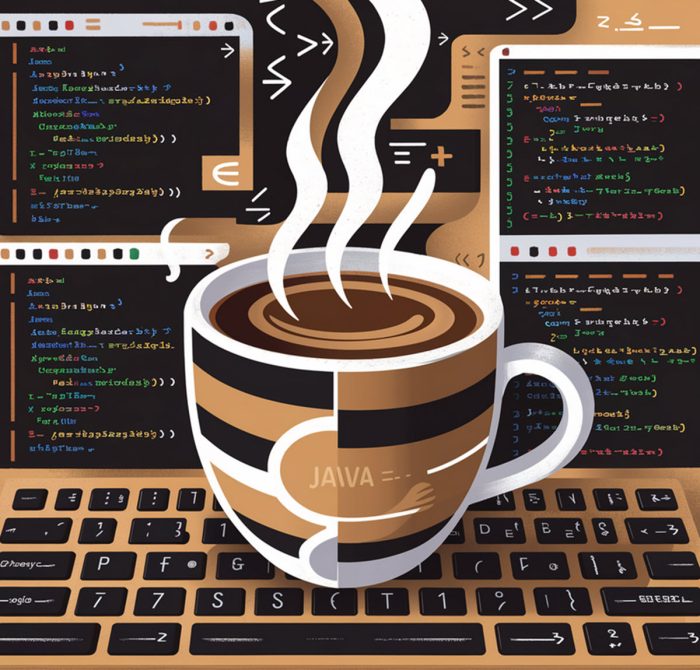Java
Java, often referred to as the “write once, run anywhere” (WORA) programming language, has been a mainstay in the technology world since its inception in the mid-90s. As a versatile, flexible, and powerful language, Java has stood the test of time, continuing to be an indispensable tool in the repertoire of both novice and experienced programmers. This article attempts to shed light on Java, its features, applications, and why it remains a top choice in many situations.
At the time of writing (2024), Java 22 is the latest version of Java, and Java 8, 11, 17, and 21 are still officially supported versions.

Understanding Java
Originated by Sun Microsystems in 1995 and now managed by Oracle Corporation, Java is a high-level, object-oriented programming language. Its design philosophy revolves around four primary principles – simplicity, robustness, security, and platform independence. This “write once, run anywhere” language was designed to run on any platform that has a Java Virtual Machine (JVM), making it highly portable across operating systems.
Background and history
Java was created by James Gosling at Sun Microsystems and released in May 1995 as a core component of Sun´s Java platform. The first public implementation, Java 1.0, was released in 1996.
Back in 1991, Gosling began working on the Java language with Mike Sheridan and Patrick Naughton. Originally, the language was called Oak and intended for interactive television, but it proved to complex and advanced for the digital cable television industry. (The name Oak is a reference to an oak that grew outside Gosling´s office. Later, the name was changed to Green, and then to Java.)
The five primary goals when Java was created
- It must be simple, object-oriented, and familiar.
- It must be robust and secure.
- It must be architecture-neutral and portable.
- It must execute with high performance.
- It must be interpreted, threaded, and dynamic.
Syntax
Java was designed with a C and C++ style syntax to make it easier for system and application programmers already familiar with these languages.
Licenses
The Java compilers, virtual machines and class libraries were all originally released under proprietary licenses. Later, Sun relicensed most of its Java technologies under the GPL-2.0-only license.
In late 2006, Sun released much of the Java Virtual Machine as free and open-source software (FOSS) under the terms of the GPL-2.0-only license. The follwing year, Sun made all of its JVM core code available under free software/open-source distribution terms, expert for a small section of code which they could not include since they were not the owners of the copyright.
Features of Java
Java is a high-level, class-based, object-oriented programming langauge with few implementation dependencies. It is a general-purpose programming language and compiled Java code can run on all platforms that support Java (no need to recompile).
Java’s popularity can largely be attributed to its myriad of features that make it an exceptional programming language.
1. Platform Independence: Java’s code is compiled into bytecode, which can run on any system with a Java virtual machine (JVM), making it platform-independent. When Java applications are compliled to bytecode it will run on any JVM regardless of the nature of the underlying computer architecture.
2. Object-Oriented: Java follows an object-oriented programming model, meaning it groups data and functions into objects, offering the benefits of modularity and code reuse.
3. Multithreaded: Java supports multithreading, allowing simultaneous execution of two or more parts of a program for maximum utilization of the CPU.
4. Robust and Secure: Java provides a robust system capable of handling runtime errors and eliminating error-prone situations by emphasizing compile-time error checking. It also implements a secure execution environment which minimizes the risk of security breaches.
- Syntax: The syntax of Java is similar to C anc C++, but with fewer low-level faciltities.
- Dynamic capacity: The Java runtime provides dymanic capabilities, including runtime code modification, which sets it apart from many compiled languages.
Applications
Java’s versatility makes it suitable for a plethora of applications. It is the backbone of many enterprise-level applications, forming the base for the server-side of web applications. Java is widely used in creating Android apps, scientific applications, financial services, Big Data technologies, among others.
Java and the World of Software Development
In the ever-changing landscape of software development, Java continues to hold its ground. According to RedMonk’s language rankings, Java is consistently in the top three most popular programming languages, a testimony to its enduring relevance.
One of the key reasons for this sustained popularity is Java’s adaptability. It’s evolved over time, with new versions offering improved features and functionalities. The transition from monolithic architectures to microservices, for instance, saw Java adopting lightweight frameworks like Spring Boot, making it an excellent choice for developing microservices-based applications.
Moreover, the vibrant Java community offers a wealth of libraries and frameworks that can significantly speed up the development process. The active community also ensures that help is readily available, and solutions to common problems are often just a quick internet search away.
In 2022, Java was the third most popular programming language according to data from GitHub.
Still, it should be noted that the use of Java has declined somewhat is recent years, as other languages that also uses JVM has increased in popularity.
Conclusion
As we continue to advance in the digital age, the demand for Java developers remains high. Whether you’re aiming to develop complex enterprise systems or mobile applications, understanding and mastering Java will undoubtedly be a valuable asset in your programming toolbox. Its robustness, security, and cross-platform capabilities, coupled with a vibrant community and strong corporate support, ensures Java will continue to be an indispensable programming language for many years to come.
This article was last updated on: June 6, 2024
